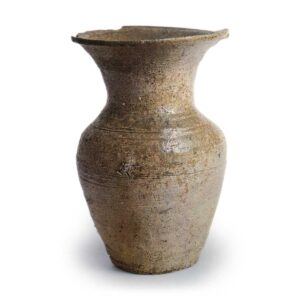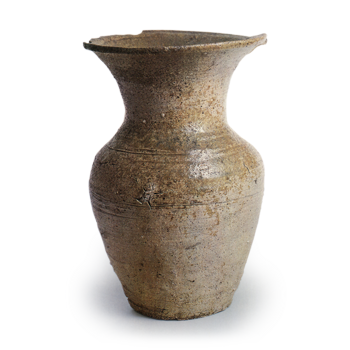
Excavated from Hibarayama Kiln, Saburoya, Nishiano, Tokoname-shi, Aichi
12th century
Height 26.5cm, mouth diameter 18.0cm, body diameter 17.5cm, bottom diameter 9.7cm
Tokoname City Ceramic Research Institute
This wide-mouth vase, which is found only in early Tokoname ceramics, is one of the vessels that best represents the tradition of Sanage kiln ash glaze pottery, along with the water jar described above.
The final stage of ash glaze pottery has a two-tiered joint between the neck and the shoulder, and the border between the two is clearly defined. In contrast to the former type, which was wheel-thrown and water-ground, the early Tokoname ware from the central Chita Peninsula, like this vessel, was made by rolling up clay, and the vessel walls are thick and misshapen. It is made of highly refractory white clay containing pebbles and fired by reduction firing. It is very well fired, with a yellowish green natural glaze on the shoulder. The shoulders are covered with a natural yellowish-green glaze, and there are also some feldspar pellets, showing the unique white clay taste of Tokoname.
This wide-mouth vase was probably made near the end of the 12th century. This is one of the relatively few examples of this type.



